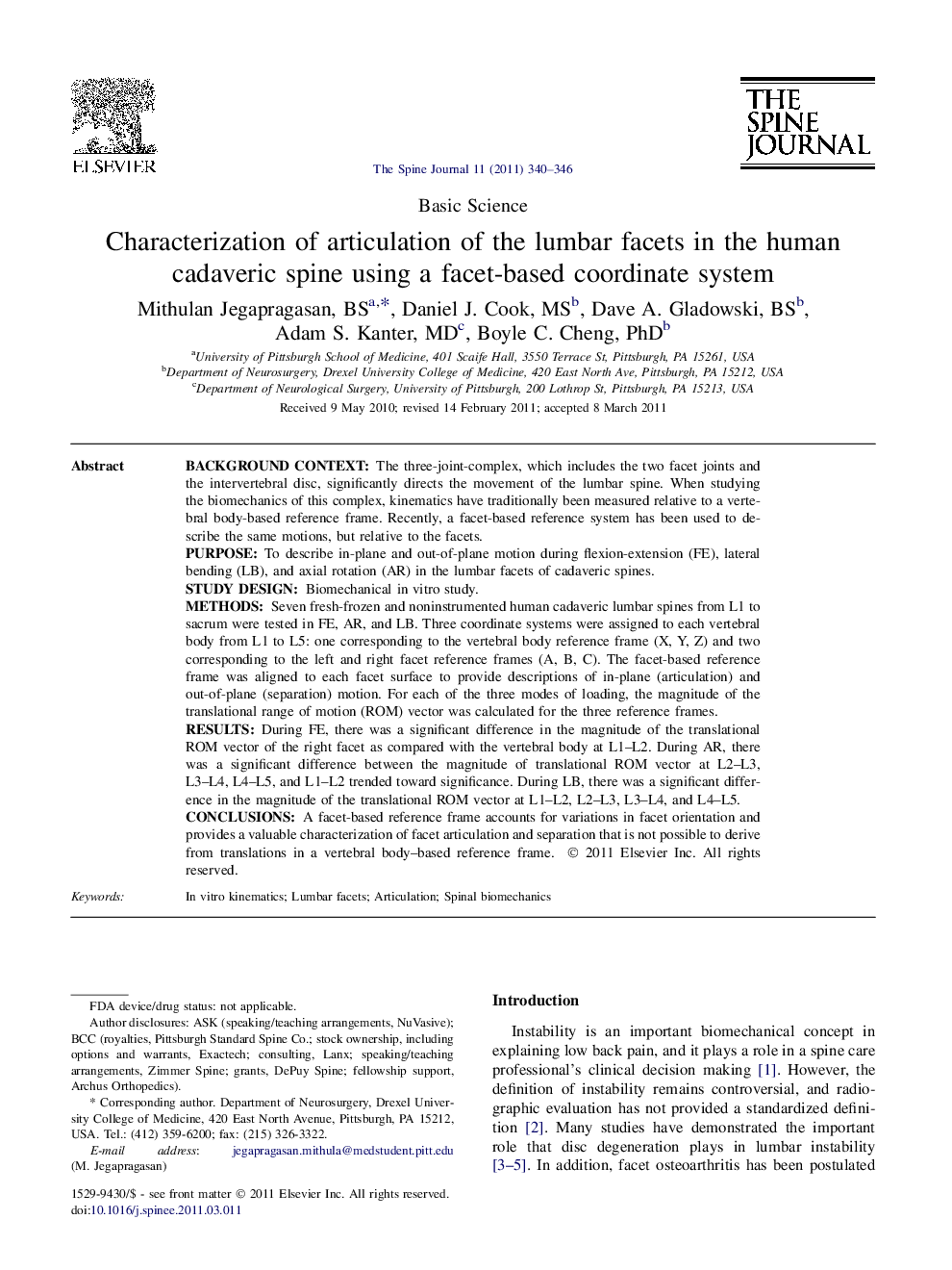| کد مقاله | کد نشریه | سال انتشار | مقاله انگلیسی | نسخه تمام متن |
|---|---|---|---|---|
| 6212831 | 1268601 | 2011 | 7 صفحه PDF | دانلود رایگان |

Background contextThe three-joint-complex, which includes the two facet joints and the intervertebral disc, significantly directs the movement of the lumbar spine. When studying the biomechanics of this complex, kinematics have traditionally been measured relative to a vertebral body-based reference frame. Recently, a facet-based reference system has been used to describe the same motions, but relative to the facets.PurposeTo describe in-plane and out-of-plane motion during flexion-extension (FE), lateral bending (LB), and axial rotation (AR) in the lumbar facets of cadaveric spines.Study designBiomechanical in vitro study.MethodsSeven fresh-frozen and noninstrumented human cadaveric lumbar spines from L1 to sacrum were tested in FE, AR, and LB. Three coordinate systems were assigned to each vertebral body from L1 to L5: one corresponding to the vertebral body reference frame (X, Y, Z) and two corresponding to the left and right facet reference frames (A, B, C). The facet-based reference frame was aligned to each facet surface to provide descriptions of in-plane (articulation) and out-of-plane (separation) motion. For each of the three modes of loading, the magnitude of the translational range of motion (ROM) vector was calculated for the three reference frames.ResultsDuring FE, there was a significant difference in the magnitude of the translational ROM vector of the right facet as compared with the vertebral body at L1-L2. During AR, there was a significant difference between the magnitude of translational ROM vector at L2-L3, L3-L4, L4-L5, and L1-L2 trended toward significance. During LB, there was a significant difference in the magnitude of the translational ROM vector at L1-L2, L2-L3, L3-L4, and L4-L5.ConclusionsA facet-based reference frame accounts for variations in facet orientation and provides a valuable characterization of facet articulation and separation that is not possible to derive from translations in a vertebral body-based reference frame.
Journal: The Spine Journal - Volume 11, Issue 4, April 2011, Pages 340-346